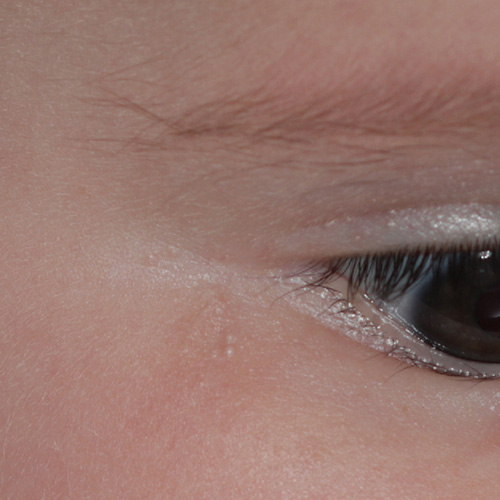Neonatal cephalic pustulosis
Neonatal cephalic pustulosis (also known as neonatal acne) is a common transient eruption in infants aged 3 to 6 weeks, caused by a temporary overgrowth of Malassezia species. Tiny monomorphic pustules, often on an erythematous base, appear on the cheeks, forehead, scalp, neck and upper chest. Severity of the rash varies, and although it can be widespread, the child remains well.
Neonatal cephalic pustulosis is commonly misdiagnosed as infantile acne; however, unlike infantile acne, comedones (ie blackheads and whiteheads) are absent. It may also be confused with milia (harmless small white cysts commonly occurring on the face of infants; see here for a photo) and miliaria (small red papules and vesicles caused by obstruction of sweat glands, which can occur in hot and humid climates).
Although neonatal cephalic pustulosis resolves in a few weeks without treatment, it responds quickly to a topical imidazole. If appearance of neonatal cephalic pustulosis is a concern, use:
1clotrimazole 1% cream topically, twice daily clotrimazole
OR
1ketoconazole 2% cream topically, twice daily. ketoconazole
If lesions appear very inflamed or itchy, consider adding hydrocortisone. Use:
hydrocortisone 1% cream topically, twice daily until skin is clear (usually 2 to 3 days)1. hydrocortisone

